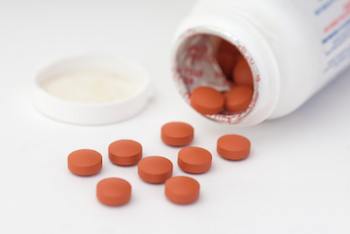
Young teenagers rate slimline cigarettes as stylish, feminine and possibly safer than regular brands, say researchers.
Thinner cigarettes were generally seen as weaker, more palatable, and less harmful by a focus group of 15-year-olds from Glasgow.
In fact, some super-slim brands contain more dangerous tobacco chemicals than their bulkier counterparts, according to the study authors.
Teenagers were most attracted to slim and super-slim cigarettes with white filters and decorative features, describing them as “classy” and “nicer”, said Cancer Research UK.
In contrast one long brown cigarettes was viewed as particularly harmful and labelled “disgusting”, “really, really strong”, and “old fashioned”.
The researchers asked 48 teenage boys and girls about eight cigarette brands that differed in length, diameter, colour, and design.
Professor Gerard Hastings, Cancer Research UK’s social marketing expert at the University of Stirling and one of the study authors, said: “Our research confirms previous studies that both the pack and the product are powerful marketing tools in the hands of the tobacco industry which it is using to recruit a new generation of smokers. It’s time policy makers moved to standardise both.”
Co-author Allison Ford, also from the University of Stirling, said: “This important study reveals for the first time that adolescents associate slim and decorative cigarettes with glamour and coolness, rating them as a cleaner, milder and safer smoke.
“It is incredibly worrying to hear that adolescents believe that a stylishly designed cigarette gives a softer option.”
Cancer Research UK is campaigning for plain standardised packaging of cigarettes and has launched an online film accusing the tobacco industry of encouraging children to smoke.
The study found that teenagers thought white tips and longer cigarettes portrayed a cleaner, feminine image reminiscent of glamorous female stars from old movies. The image softened perceptions that smoking was harmful, said the scientists.
Cigarettes with white tips were also associated with menthol, which was perceived as weaker and less harmful.
In their paper, published in the European Journal of Public Health, the researchers wrote: “The slimmer diameters of these cigarettes communicated weaker tasting and less harmful-looking cigarettes. This was closely linked to appeal as thinness implied a more pleasant and palatable smoke for young smokers.
“This exploratory study provides some support that standardising cigarette appearance could reduce the appeal of cigarettes in adolescents and reduce the opportunity for stick design to mislead young smokers in terms of harm.”
Mumsnet chief executive and co-founder Justine Roberts, who supports the campaign, said: “Very few parenting issues are completely black and white, but nobody wants their child to start smoking. Standardised packs may not be a silver bullet, but Mumsnet users are clear that they’d be very happy to see them as part of a range of measures to discourage children from getting hooked.”
Harpal Kumar, Cancer Research UK’s chief executive, said: “This research once again highlights how the tobacco industry exploits any opportunity to lure young smokers to secure a profitable future.
“The evidence shows children are attracted to glitzy, slickly-designed cigarettes and packs and every year more than 207,000 UK children between 11 and 15 start smoking. We are urging the Government to introduce standardised packaging to discourage these children from starting this life-threatening habit and to prioritise children’s health over tobacco company profits.”
The House of Lords will debate standardising cigarette packaging over the next few weeks.
Source: The Independent




 The Centers for Disease Control and Prevention (CDC) states that around 715,000 Americans suffer a heart attack every year. Now, scientists have created a new imaging technique that could identify which patients are at high risk. This is according to a study published in the The Lancet.
The Centers for Disease Control and Prevention (CDC) states that around 715,000 Americans suffer a heart attack every year. Now, scientists have created a new imaging technique that could identify which patients are at high risk. This is according to a study published in the The Lancet.






